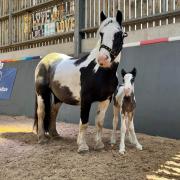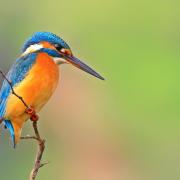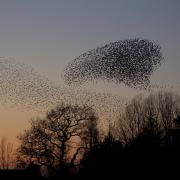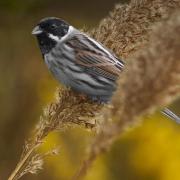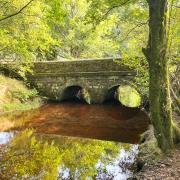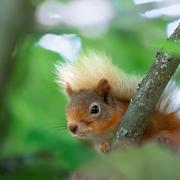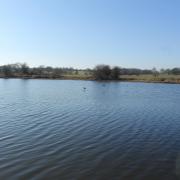Lancashire Life has adopted one of the county’s oldest woodlands and we’ll be following it though the seasons to see how the management of the woods allows plants and animals to thrive
A central theme of this year’s royal celebrations is the creation of a green canopy – the plant a tree for the jubilee campaign.
Trees are important for many reasons: they are a vital weapon in the fight against climate change, taking carbon dioxide out of the atmosphere, improving air quality and helping prevent flooding. They are also home to a huge range of wildlife – from birds nesting in the canopy to mammals who make their homes in the roots – and they provide valuable spaces for people to exercise and relax.

But woodlands need to be managed and looked after. Without intervention, invasive species could take over and native plants and animals could face a struggle to survive.
A Woodland Trust report recently found that just seven per cent of the UK’s woodlands are in good condition, even though woodland cover has increased threefold in the past 120 years.
That’s why, to mark both the Queen’s jubilee and our own 75th anniversary, Lancashire Life has adopted part of one of Lancashire’s oldest woodlands.
The site in Redscar Woods beside the M6 at Preston overlooks the Lancashire Wildlife Trust’s Brockholes reserve.

This prominent position is one of the things that has saved this ancient Lancashire woodland from development, because it’s so much harder to build or farm on a steep slope.
Alan Wright from Lancashire Wildlife Trust said: ‘Planting trees is a really good thing and it is great that a lot more have been planted in the last 20 years-or-so than in previous centuries but woodlands need to be managed.
‘It is great to plant trees, and we will be planting some to replace others lost to disease, but it is important woodlands are looked after so that the species beneath the canopy can thrive.
‘Woodland management includes coppicing work, creating paths, and in some places clearing the scrub and removing some invasive species – if we didn’t do that with Himalayan balsam it would take over and ruin woodlands.
‘We saw vast beautiful carpets of bluebells in many of our woods in the spring and that doesn’t just happen, we create the right environment for them to grow.’

Along the Ribble Valley you will find stretches of woodland which are some of the last remaining ancient woods in Lancashire. Ancient woodlands are classified by how long they have been around, since at least 1600, so we are indeed walking in the footsteps of our ancestors as we step through this paradise for plants and animals.
Some of these trees will have heard talk of the French Revolution and the Age of Enlightenment, along with stories of American Independence. Some will have been affected by the smogs of the Industrial Revolution from the coalfields and the cotton mills. More recently, they will have watched a sand quarry become the beautiful Brockholes nature reserve.
Not all these trees date back that far, but there is an oak tree in Boilton Wood that has been classified as “vintage” in the Woodland Trust inventory – that makes it at least a couple of centuries old.

Boilton, Nab, Redscar and Tunbrook Woods offer a glimpse back into the untamed woodland landscapes of old. Tracing the River Ribble, their mixture of sycamore, elm, ash and oak trees creates the perfect home for plants and animals that are specially adapted to life in ancient woods.
In the coming months we’ll be featuring the woodland, its plant and animal life and the work that goes on to manage the area of Redscar Wood we have adopted.
The plants in this woodland are well suited for the habitat and provide shelter for a lot of wildlife. Roe deer, foxes, moles and common shrew have all be seen in the woods and common pipistrelle, soprano pipistrelle, noctule and Daubenton’s bats, all roost in the holes of trees close to birds, like kestrels, woodcock, tawny owls, great-spotted woodpeckers and treecreepers.
In winter, migrating fieldfare, redwing, siskins and brambling often arrive to feed on the woodland berries, and in summer, a rare butterfly steals the show. The white-letter hairstreak flies for just three weeks of the year breeding in the elm treetops and then feeding on bushes below.

Alan added: ‘While Brockholes is open to all visitors, Boilton, Nab, Redscar and Tunbrook Woods have some restricted areas, where wildlife can flourish undisturbed.
‘By supporting our woodland management, we believe Lancashire Life and its readers can help us to lead the way to ensure more of these vital ancient woodlands are homes to lots of wildlife.’

Colourful and loud
Our species of the month is the nuthatch
Everything about the nuthatch is bright – its song, its colouring and the way it swoops in and out of the trees in the woodland.
There are tree stumps in Redscar Woods where you will almost certainly see this beautiful bird seeking insects in the old trunks.

And, if you live near to woodland, you should easily be able to attract nuthatch with nuts and seeds on your bird table.
About the size of a plump great tit, the nuthatch resembles a woodpecker because of its large head and bill. And it is a truly stunning creature, mainly blue-grey, with a long, black eyestripe, white cheeks and throat, and a rust-coloured belly.
It also the only bird in the UK that can climb down a tree looking for food, supported by its super-strong toes.
It nests in holes in trees or abandoned nests, but will use nest boxes too. Now is a good time to watch out for fledglings in your local wood or park.
You will know if a nuthatch is around because of its loud song, a rising and falling “wee, wee, wee” and it is, indeed, a joy to see and hear.




